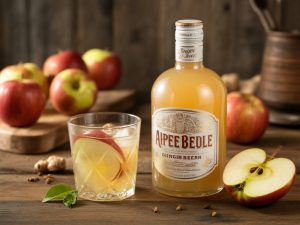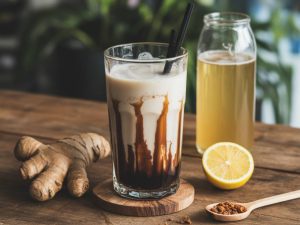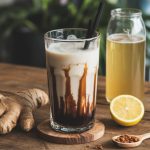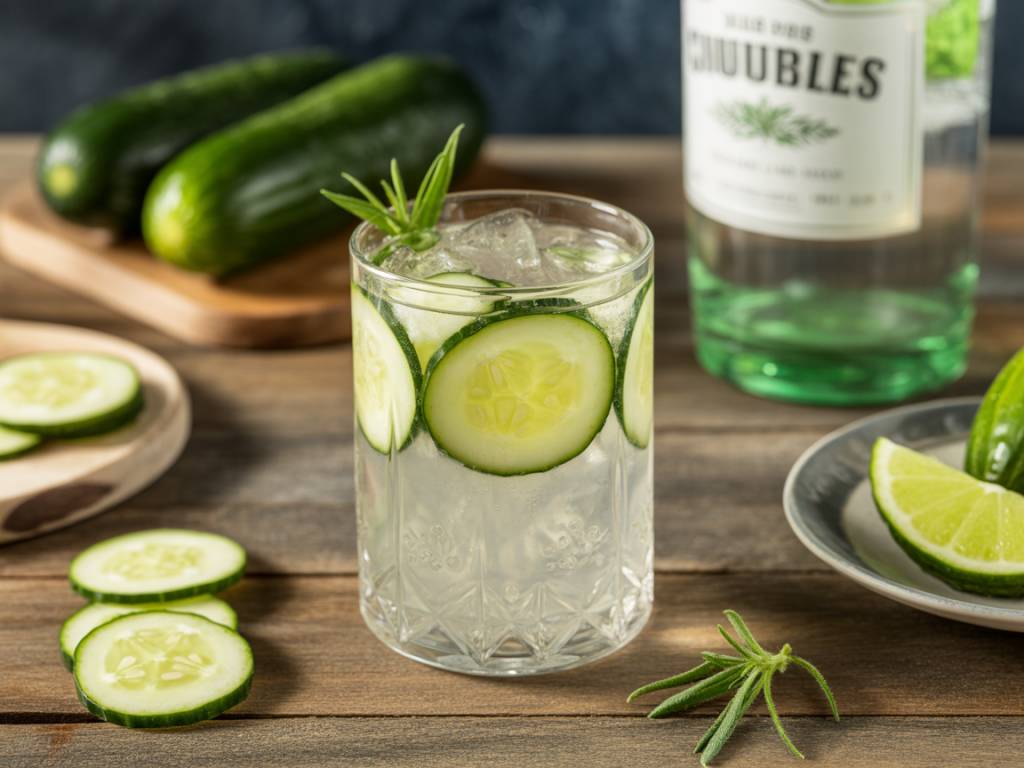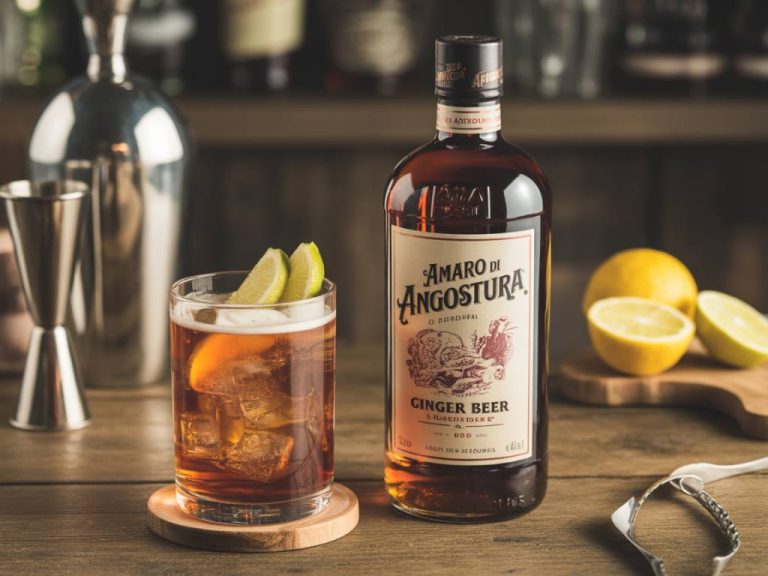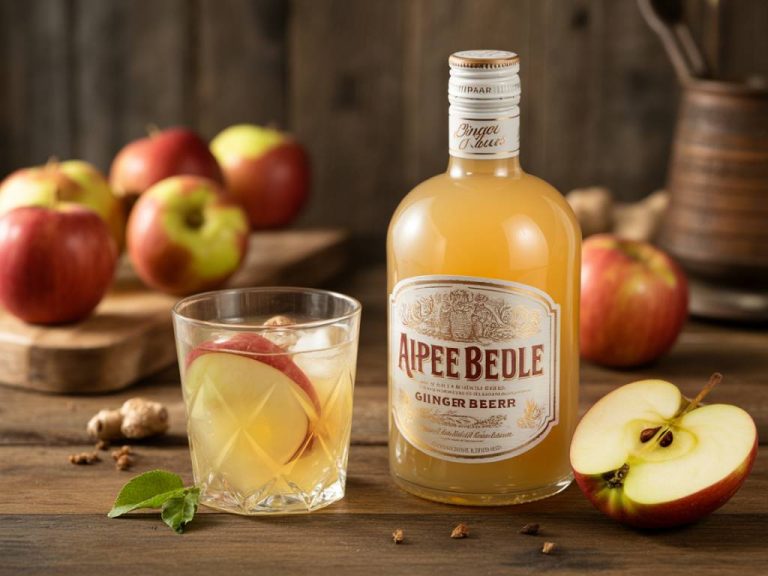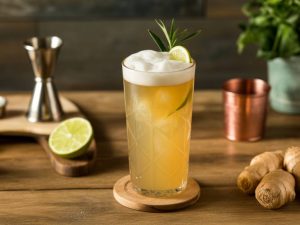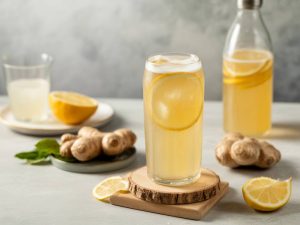Why the Cucumber Gin Rickey Deserves a Spot in Your Summer Repertoire
Some drinks quietly command attention—not with flamboyant garnishes or cloying sweetness, but with clarity, crispness, and the story they tell sip after sip. The Cucumber Gin Rickey is one of them. It’s lean, herbal, deeply refreshing, and profoundly satisfying on a sweltering afternoon. It also happens to be a perfect example of what happens when you let the right ingredients speak with subtlety and precision.
Here at Ginger Beer Promotions, where we celebrate the intersection of bold botanicals and nutritional intuition, the Cucumber Gin Rickey represents an elegant masterclass in flavor restraint. Made with just three core ingredients—gin, fresh lime juice, and soda water—this classic highball has been a staple since the late 19th century. The cucumber twist? That’s where creativity and modern mixology breathe new life into this often-overlooked cocktail.
What Is a Gin Rickey—and Why Should You Care?
The Gin Rickey hails from the golden age of cocktails, tracing its lineage back to Washington D.C. in the 1880s, where lobbyist Joe Rickey helped spark the trend. Originally made with bourbon, the drink evolved into its gin-based form shortly thereafter. Today, it remains one of the purest and most calorie-conscious cocktails available—free of added sugars and composed almost entirely of hydrating ingredients.
That makes the Gin Rickey not only an excellent blank canvas for experimentation, but also a smart choice for those mindful about what goes into their glass. With gin delivering botanical complexity, lime ensuring brightness, and soda water balancing everything with texture and volume, the drink gives maximum payoff for minimum input. The cucumber addition? It turns the Rickey from refreshment into revelation.
The Science of Refreshment: Why Cucumber Works So Well
Cucumber and gin share one important quality: a high concentration of volatile organic compounds that contribute to their aromatic signatures. Specifically, cucumber contains compounds like (E,Z)-2,6-nonadienal, which contributes that unmistakable « green » aroma. Pair that with a London dry gin rich in juniper, coriander, and citrus peels, and you establish a herbal, cooling base with layered complexity.
From a nutritional perspective, cucumber is 96% water and boasts a modest amount of vitamin K, potassium, and several anti-inflammatory phytochemicals like cucurbitacins. While its contribution in a cocktail amounts to more taste than nutrition, the psychological aspect of drinking something that feels so alive and fresh should not be underrated.
The key here is synergy: cucumber deepens the Rickey’s crispness without overpowering the gin. It doesn’t ask for sugar. It doesn’t demand bitters. It simply elevates.
Choosing the Right Ingredients
As always, cocktail simplicity hides clever complexity. Each ingredient in a cucumber gin rickey plays an essential role—and quality matters.
- Gin: I recommend a classic London Dry for bright citrus and pine-forward notes, but floral gins like Hendrick’s (which already hints at cucumber and rose) can work beautifully too. Avoid barrel-aged or overly botanical styles, as they may muddy the drink’s clarity.
- Cucumber: Use fresh, firm cucumbers. English cucumbers (the long, thin-skinned ones) are ideal because they have fewer seeds and a cleaner flavor. Slice thin for infusion or muddle for stronger presence.
- Lime Juice: Always fresh—never pasteurized or bottled. A juiced lime will yield about 1 ounce; one is enough for two drinks.
- Soda Water: Go for highly carbonated varieties from siphons or premium brands. Flat bubbles kill the drink’s zing.
The Basil Durand Tested Recipe
This version brings three years of mixology tweaks and real-world stress testing to your glass. I’ve made over 70 iterations using different gins, garnishes, and cucumber preparations. This one strikes that ideal point between finesse and refreshment.
Ingredients (for 1 drink):
- 50 ml (1.75 oz) London dry gin
- 20 ml (0.75 oz) freshly squeezed lime juice
- 90–120 ml (3–4 oz) chilled soda water
- 4 thin slices of cucumber (plus one ribbon for garnish)
- Ice—preferably clear, large-format cubes
Method:
- Lightly muddle two cucumber slices in the base of a highball glass. Don’t overdo it—you want essence, not pulp.
- Add the gin and lime juice. Stir gently to blend.
- Fill glass with ice and top with soda water, tilting the glass as you pour to preserve carbonation.
- Give one gentle stir. Garnish with a cucumber ribbon wrapped along the inner wall of the glass or perched on the rim.
Optional: Add a sprig of mint for a layered herbal note, or a dash of saline solution (3:1 water to sea salt) for enhanced perception of brightness.
Variations Worth Exploring
As a highball, the Gin Rickey is practically begging for interpretation. Here are a few riffs that I’ve developed in my lab (read: kitchen) over several summers:
- Smoky Rickey: Substitute half the gin with mezcal for whispering campfire complexity. Garnish with grilled cucumber wheel.
- Spicy Cuke: Muddle cucumber with a thin slice of jalapeño. The heat underlines the freshness—ideal for more adventurous palates.
- Ginger Cucumber Rickey: Add 10 ml of ginger cordial or fresh ginger juice before topping with soda. An homage to Ginger Beer Promotions’ botanical roots, this variation adds depth and bite.
- Zero-Proof Version: Replace gin with Seedlip Garden 108 or a well-balanced cucumber shrub. The effect is still herbal, crisp, and incredibly satisfying.
Pairing Notes and Culinary Applications
Few cocktails play as nicely with food as the cucumber gin rickey. Thanks to its acidity and effervescence, it’s ideal alongside oily fish like mackerel or trout, or Mediterranean mezze: smoked eggplant, labneh, olives. It also sings next to cold noodle dishes dressed with sesame and soy or summer rolls with fresh herbs and rice paper.
In a pinch, I’ll even pair it with watermelon and feta salad. Think of it as balancing hydration and salt, like an electrolyte-rich aperitif.
Hydration, Lightness, and Healthier Imbibing
Let’s talk numbers. A standard gin rickey averages 120–140 kcal per serving—vastly less than a margarita (~300 kcal), mojito (~240 kcal), or piña colada (don’t even ask). No syrups, no processed mixers. This makes it a friend of those with glucose sensitivity, or anyone looking for smarter sips that don’t sacrifice taste.
More importantly, the ingredients themselves carry functional benefits:
- Cucumber: As mentioned, 96% water, anti-inflammatory, and mentally associated with “freshness.”
- Lime: High in vitamin C, stimulates saliva production and aids digestion.
- Soda water: Hydrating, zero-calorie, and essential for the drink’s structure.
Yes, ethanol is still an intoxicant, and moderation is key—but if you’re choosing a lower-impact cocktail that aligns with light living and gastronomic elegance, the cucumber gin rickey is hard to beat.
Final Thoughts on Seasonal Simplicity
There’s a lot of noise in the cocktail world—overcomplicated builds, overhyped ingredients, and an endless stream of sugary syrups competing for relevance. The Cucumber Gin Rickey cuts through all of it with a whisper: freshness, clarity, balance. Its simplicity is not just aesthetic but functional—an accolade to form and flavor in seamless harmony.
So next time you find yourself sweltering at a summer barbecue, or craving something restorative and alcoholically gentle, reach for cucumber, gin, lime and soda. You won’t just be drinking—you’ll be hydrating with style.
And as always, if you discover your own twist, I’d love to hear about it. Drop me a line or share your riff in the comments. After all, even the coolest concoctions begin with a single sip of curiosity.



